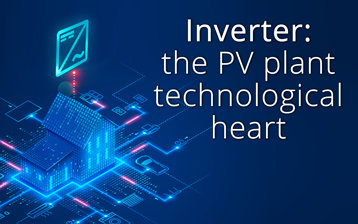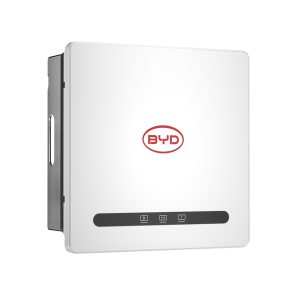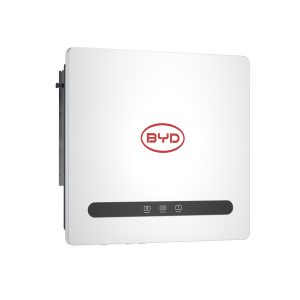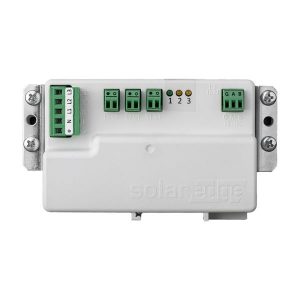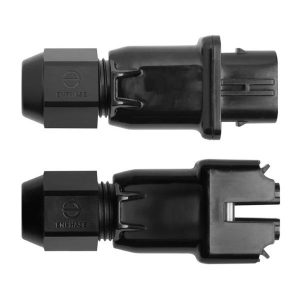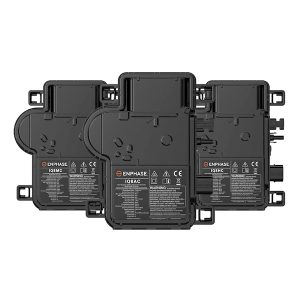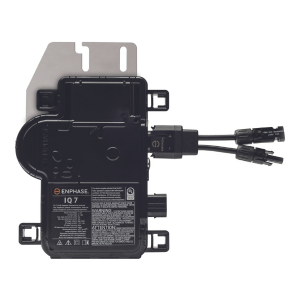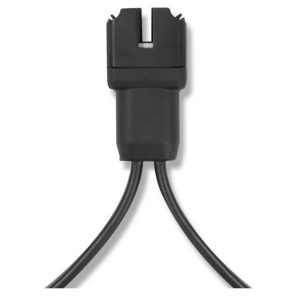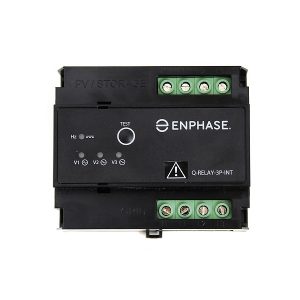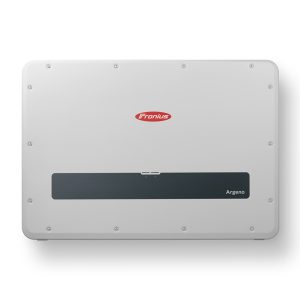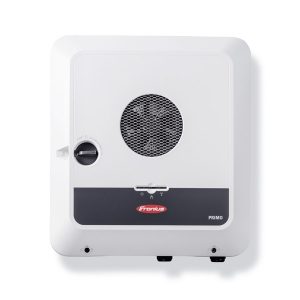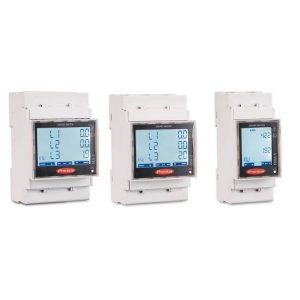Today an inverter for the photovoltaic system is no longer entrusted only with the conversion of the energy produced by the photovoltaic panels but also other important functions; all this taking for granted the quality and technology (primarily about efficiency) which are not always taken for granted.
In addition, inverters with special characteristics are available on the market to optimize efficiency and costs in large plants.
Accumulation management
The inverters must manage the accumulation of the energy produced by the photovoltaic system to be able to exploit it even in times of low or no irradiation; for this reason, two types of inverters have spread:
- hybrid inverter where the same device manages both the photovoltaic production and the battery;
- retrofit inverter that deals with the management of electricity storage only.
More information can be obtained by downloading the free VP Solar Storage Guide and Storage Map…
Communication between devices
The PV inverter becomes the energy heart of the building it has the possibility of communicating with other devices to manage energy in an optimized way: it can be connected to home automation systems for load control, heat pumps and in some cases also communicate directly with the appliances.
The continuous connection between devices and the internet creates an ecosystem that can be monitored, continuously updated, and controlled remotely or with messages, including voice, by the user.
High voltage inverters – 1.500V
Today, even in large photovoltaic systems, “string inverters” are used, also available in sizes over 200 kW and with numerous MPPT input channels.
This is due to the overall economic benefits that take into account various factors, such as efficiency, service continuity, installation, and maintenance costs.
To reduce costs, the use of “longer” strings of photovoltaic modules is desirable; for this, the inverters must have a very high input voltage, even 1.500V.
This factor determines the possibility of being able to “oversize” the photovoltaic field concerning the nominal power of the inverter, thus ensuring greater efficiency and a certain constancy of the power output from the system.
For more information, for system configuration, and for choosing the inverter that best suits customer needs, contact us at: [email protected].
-
BYD, Inverter, Photovoltaic inverter, Residential inverter BYD
BYD Power-Box SH3-6K: single-phase hybrid inverter
 BYD, Inverter, Photovoltaic inverter, Residential inverter BYD
BYD, Inverter, Photovoltaic inverter, Residential inverter BYDBYD Power-Box SH3-6K: single-phase hybrid inverter
The Power-Box range is characterised by its ability to efficiently manage the energy flow in residential photovoltaic systems in combination with BYD HVE batteries.
- 2 MPPT
- Up to 3 inverters in parallel in the same system
- Dedicated backup output
- SPD DC type II and AC type III
- Communication: WiFi, LAN, Bluetooth, RS485
SKU: n/a -
BYD, Commercial Inverter BYD, Inverter, Photovoltaic inverter
BYD Power-Box TH5-15K: inverter ibrido trifase
 BYD, Commercial Inverter BYD, Inverter, Photovoltaic inverter
BYD, Commercial Inverter BYD, Inverter, Photovoltaic inverterBYD Power-Box TH5-15K: inverter ibrido trifase
The new Power-Box inverters are a state-of-the-art solution for small three-phase systems, especially when used in conjunction with BYD HVE batteries.
- 2 MPPT
- Up to 3 inverters in parallel in the same system
- Dedicated backup output
- AFCI
- DC type II and AC type II SPDs
- Communication: WiFi, LAN, Bluetooth, RS485
SKU: n/a -
Accessories SolarEdge, Inverter, SolarEdge
Energy meter with Modbus connection A-400V-3Y-MTR-S
70A split core current transformer (CT) of reduced dimensions. Electricity Meter with Modbus connection for small SolarEdge systems supports an output voltage of 333mVac and provides an accuracy of ± 1%.
SKU: n/a -
Enphase, Inverter, Photovoltaic inverter
Enphase – IQ Gateway Metered 2 – ENV-S-EM-230
The IQ Gateway is the energy management device and integrates with IQ Microinverters and IQ Batteries to offer complete control and detailed information on the Enphase Energy System.
The gateway can provide solar production and energy consumption data to Enphase Enlighten monitoring and analytics software, allowing for complete remote maintenance and management of the Enphase system.
- Integrated meter
- Simple setup
- 5-year warranty
- Available models: ENV-S-EM-230
SKU: n/a -
Enphase, Inverter, Photovoltaic inverter
Enphase connectors, terminals and tools for wiring
Connectors for wiring of Enphase systems
- Allows easy connection of Q Cables on the roof without complex wiring
- Both male and female connectors are available
For more information download the technical datasheet
SKU: n/a -
Enphase, Inverter, Photovoltaic inverter
Enphase IQ8 series microinverters
The high-powered, smart grid-ready IQ8 Series Microinverters are designed to match the latest generation high-output PV modules. The IQ8 Series Microinverter has the highest energy production and reliability standards in the industry, and with rapid shutdown functionality, it meets the highest safety standards.
- Nominal power up to 380 W
- Fast installation with simple AC cabling
- Integrated MC4 connectors
- IP67
- 25-year warranty
- Available models: IQ8HC
SKU: n/a -
Enphase, Inverter, Photovoltaic inverter
Enphase microinverter series IQ 7
This series of Enphase microinverters differs from the rest of the market in efficiency and reliability; they are inverters that can be installed in the rear part of the panel very compact.
- Quick installation with two-wire wiring
- Envoy and Internet connection required
- IP67 double insulation Class II enclosure
- Maximum EU efficiency of 96.5%
- Available models: IQ 7+
SKU: n/a -
Enphase, Inverter, Photovoltaic inverter
Enphase Q Cable single-phase/three-phase
Cables for wiring both three-phase and single-phase Enphase systems depending on the model selected
Available models:
- Enphase Q Cable (2m pitch) single phase – Q-25-17-240
- Enphase Q Cable (2m pitch) three-phase – Q-25-17-3P-160
- Enphase Q Cable (2.3m pitch) single phase – Q-25-20-200
- Enphase Q Cable (2.3m pitch) three phase – Q-25-20-3P-160
All these cables are also available in single connector version
SKU: n/a -
Enphase, Inverter, Photovoltaic inverter
Enphase Relay three-phase controller – Q-Relay 2.0 -3P-IT
In the installations of microinverter and Enphase storage systems, the Q-Relay 2.0 together with the Envoy-S act as an interface protection with the grid in accordance with CEI 0-21.
- Self-test function for systems <11.08kW
- Available models: Q-Relay 2.0 -3P-IT
SKU: n/a -
Fronius, Inverter, Inverter for commercial and industrial PV systems, Photovoltaic inverter
Fronius Argeno 125.0 – three-phase string inverter
 Fronius, Inverter, Inverter for commercial and industrial PV systems, Photovoltaic inverter
Fronius, Inverter, Inverter for commercial and industrial PV systems, Photovoltaic inverterFronius Argeno 125.0 – three-phase string inverter
The Fronius Argeno 125.0 is a highly efficient three-phase string inverter designed for large commercial and industrial rooftop and ground-mounted photovoltaic systems.
- 10 MPPT (with 2 inputs each)
- Arc fault protection (Fronius Arc Guard)
- Integrated surge protection type 1+2
- Communication via LAN, RS485
- Up to 7 years base warranty (extendable)
SKU: n/a -
Fronius, Fronius, Fronius, Hybrid inverter, Inverter, Inverter residential systems, Photovoltaic inverter, Retrofit
Fronius Primo GEN24 and GEN24 Plus – string single-phase & hybrid single-phase – 3.0/ 6.0 kW
 Fronius, Fronius, Fronius, Hybrid inverter, Inverter, Inverter residential systems, Photovoltaic inverter, Retrofit
Fronius, Fronius, Fronius, Hybrid inverter, Inverter, Inverter residential systems, Photovoltaic inverter, RetrofitFronius Primo GEN24 and GEN24 Plus – string single-phase & hybrid single-phase – 3.0/ 6.0 kW
GEN24 Plus single-phase hybrid inverter, with back-up function, for domestic systems.
- Integrated Data communication
- Full Back-up (GEN24 Plus only)
- PV point basic grid backup
- Available models: GEN24, GEN24 Plus
- Available sizes: 3.0 / 3.6/ 4.0 / 4.6 / 5.0 / 6.0 kW
SKU: n/a





